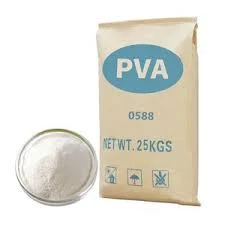Hydroxypropyl Methyl Cellulose (HPMC) A Versatile Polymer with Diverse Applications
Hydroxypropyl Methyl Cellulose (HPMC) is a semi-synthetic polymer derived from cellulose, a natural polymer obtained from plant cell walls. HPMC is a white, odorless powder that is soluble in hot and cold water, forming a transparent gel. This compound is widely utilized in various industries owing to its unique properties, such as thickening, emulsification, film-forming, and water-retention capabilities. In this article, we will explore the chemical properties, production methods, and significant applications of HPMC.
Chemical Properties and Structure
HPMC is formed by the substitution of hydroxyl groups on the cellulose molecule with hydroxypropyl and methyl groups. This modification enhances the solubility of cellulose in water and allows for a variety of viscosity grades depending on the degree of substitution. The structure of HPMC can vary; it can be tailored to achieve different physical properties, such as viscosity, thermal stability, and film-forming abilities.
The molecular weight of HPMC can also vary significantly, leading to a wide range of products that can be used in numerous applications. Generally, HPMC has excellent adhesion properties, which makes it ideal for applications requiring strong binding agents.
Production Methods
The production of HPMC typically involves several steps. The cellulose source is initially treated with an alkali to form alkali cellulose. This is followed by etherification, where etherifying agents, like propylene oxide and methyl chloride, are used to introduce hydroxypropyl and methyl groups onto the cellulose backbone. The resulting mixture is then neutralized, washed, and dried to obtain the final HPMC product.
Control over the reaction conditions, such as temperature and concentration of reagents, allows manufacturers to produce HPMC with specific properties tailored for particular applications.
hydroxypropyl methyl cellulose (hpmc)

Applications of HPMC
1. Pharmaceuticals HPMC is widely used in the pharmaceutical industry as a thickener, binder, and controlled release agent. It is an essential ingredient in the formulation of tablets, capsules, and syrups. Due to its ability to form gels, HPMC is also utilized in ophthalmic products like eye drops, providing moisture retention and improved stability.
2. Food Industry HPMC is approved for use in food applications, where it serves as a thickening agent, emulsifier, and stabilizer. It is commonly found in sauces, dressings, and bakery products to improve texture and extend shelf life. Its ability to retain moisture makes it a popular choice for gluten-free products.
3. Construction and Building Materials In construction, HPMC is used as an additive in cement, mortar, and plaster mixtures. It enhances workability, extends open time, and improves adhesion to surfaces, making it an essential component in modern building materials.
4. Cosmetics and Personal Care HPMC's thickening and film-forming capabilities make it useful in the formulation of various personal care products, including shampoos, conditioners, lotions, and creams. It helps to improve product texture and stability while providing a smooth application.
5. Biodegradable Films The rising demand for sustainable materials has led to the exploration of HPMC-based biodegradable films. These films are being utilized for food packaging and other applications, offering an eco-friendly alternative to traditional plastics.
Conclusion
Hydroxypropyl Methyl Cellulose is a versatile polymer with a broad range of applications across various industries. Its unique properties make it an invaluable ingredient in pharmaceuticals, food, construction, and cosmetics. As the demand for biodegradable materials grows, the significance of HPMC in sustainable practices is expected to increase. The ability to modify its properties makes HPMC a key player in the development of innovative products, paving the way for further advancements across multiple sectors. With ongoing research and development, HPMC's future applications are bound to expand, promising exciting potential for this remarkable polymer.
-
The Versatility of Industrial Additives: Mhec, Hpmc, And Wall Putty SolutionsNewsMar.28,2025
-
The Importance of HPMC in Modern IndustriesNewsMar.28,2025
-
Partnering with Reliable Manufacturers for Optimal ResultsNewsMar.28,2025
-
Enhancing Construction Performance with Redispersible Polymer PowdersNewsMar.28,2025
-
Enhancing Construction and Household Products with Advanced AdditivesNewsMar.28,2025
-
Building Strong Foundations with Key Construction MaterialsNewsMar.28,2025






